MR. DINKINS’ BULGING FACADE (1977)
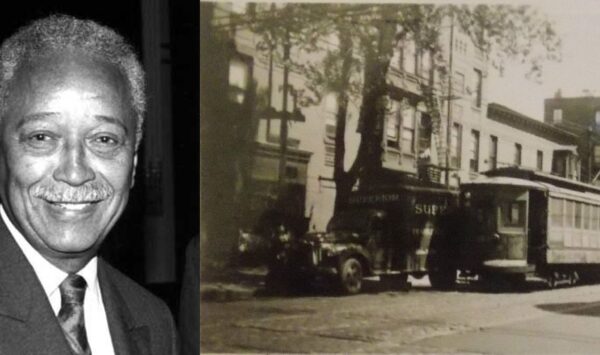
******************************************************************************************************************************** Brownstone Detectives investigates the history of our clients’ homes. The story you are about to read was composed from research conducted in the course of one of those investigations. Do you know the history of YOUR house? ******************************************************************************************************************************** Have you ever wondered what once filled those large lots at the corners of Halsey Street and Ralph Avenue? Every house has a history. You know it is there, but the clouds of the past work to obfuscate the present. Uncovering that history takes some detective work, but with a little time and some gumshoe sleuthing, the answers can be discovered. With regard to 774 Halsey Street – what do we know happened? A fire? Decay? Gas explosion? What do we know about the life of the building? What was it used for? Who owned the building and who lived there? We looked to clues from newspaper archives, fire insurance maps, and physical evidence to unravel that history. This is our report: WHAT HAPPENED to 774? A 4-story brick apartment building – 774 Halsey Street – sat on the southeast corner of the Halsey/Ralph intersection. It had a commercial space on the ground floor facing Halsey Street and one at the rear of the building at 153 Ralph Avenue. The building housed a number of apartments the addresses/entrances of which were on the Ralph side of the building at 149 Ralph Avenue. The apartments of the Ralph-facing side of the building had stacked bay windows, one on each floor. South of […]
WHEN SARATOGA AVENUE WAS YOUNG (1899)
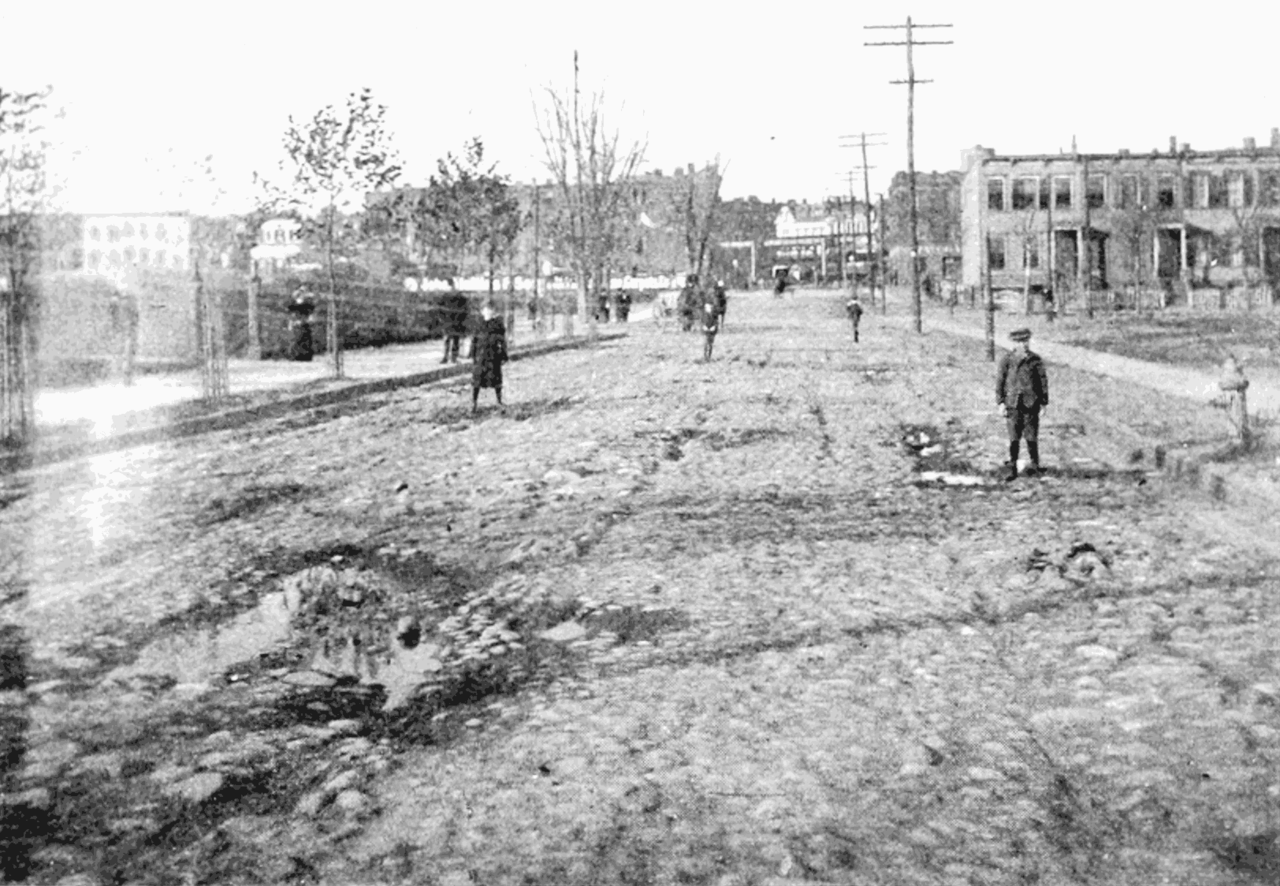
******************************************************************************************************************************** Brownstone Detectives investigates the history of our clients’ homes. The story you are about to read was composed from research conducted in the course of one of those investigations. Do you know the history of YOUR house? ******************************************************************************************************************************** We’d never seen this 1899 picture before – the cobblestones of Saratoga Avenue – taken from Macon Street looking north. To the left you see the gates of the 3-year old Saratoga Square Park and to the right, what was known then as Saratoga Field. A few years before this shot was taken, you would have seen the circus and the various Wild West shows of the time camping out on these two blocks, attracting crowds of people from miles around to the neighborhood. In the distance, you can see the elevated Brooklyn Rapid Transit track, known around this time as the Broadway Elevated, which had opened in 1893 and was a 2-track line at the time. That’s right – no express! And staring back at you are some of the folks who lived and played in the area. It appears from the shot that they were positioned by the photographer. They’re all standing still and upright. Across the street from the park (on the right side of the photograph) would soon be built the Arcadia Dancehall, a “modern dancehall for working girls,” where the modern dances of the day – such as the Bunny Hug and the Tango – were forbidden. Vice President Calvin Coolidge and Teddy Roosevelt’s son, Theodore, […]
THE SLOW MUTATION OF “THE REGINA” (1902)
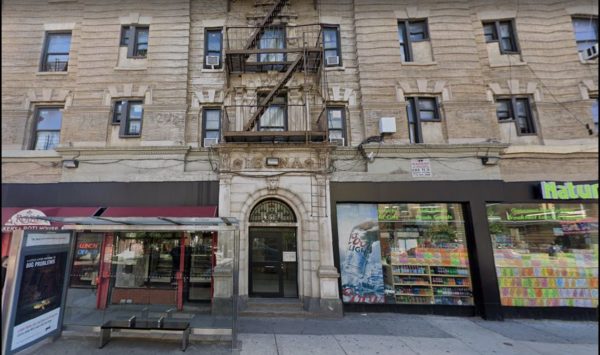
******************************************************************************************************************************** Brownstone Detectives investigates the history of our clients’ homes. The story you are about to read was composed from research conducted in the course of one of those investigations. Do you know the history of YOUR house? ******************************************************************************************************************************** In the historical research work we do for clients, we uncover old photos of their buildings in newspapers and in other archives. It is common to see that changes have taken place with these structures over the years, but these changes are not always readily apparent. Check out the following pics of this Crown Heights apartment building. See what you notice has changed in almost 120 years. Caption: “This is a picture of the Regina, a large apartment house recently bought by John Mollenhauer, the sugar refiner. It stands on the southwest corner of Nostrand avenue and Pacific street. It was built by E. J. Maguire. The building is in the heart of the St. Marks section. The transaction was partly exchange and partly cash. The building is valued at $90,000. Mr. Mollenhauer has invested extensively in property in the St. Marks section, owning several other apartment houses built by Mr. Maguire and many fine private houses. Mr. Mollenhauer lives in the Eastern District.” Follow @BrownstoneDetec Share ———————————————————————————————————————– The Brownstone Detectives Brownstone Detectives is an historic property research agency. Our mission is to document and save the histories of our clients’ homes. From our research, we produce our celebrated House History Books and House History Reports. Contact us today to begin […]
FOOLING THE UNDERTAKER, PT. II (1900)
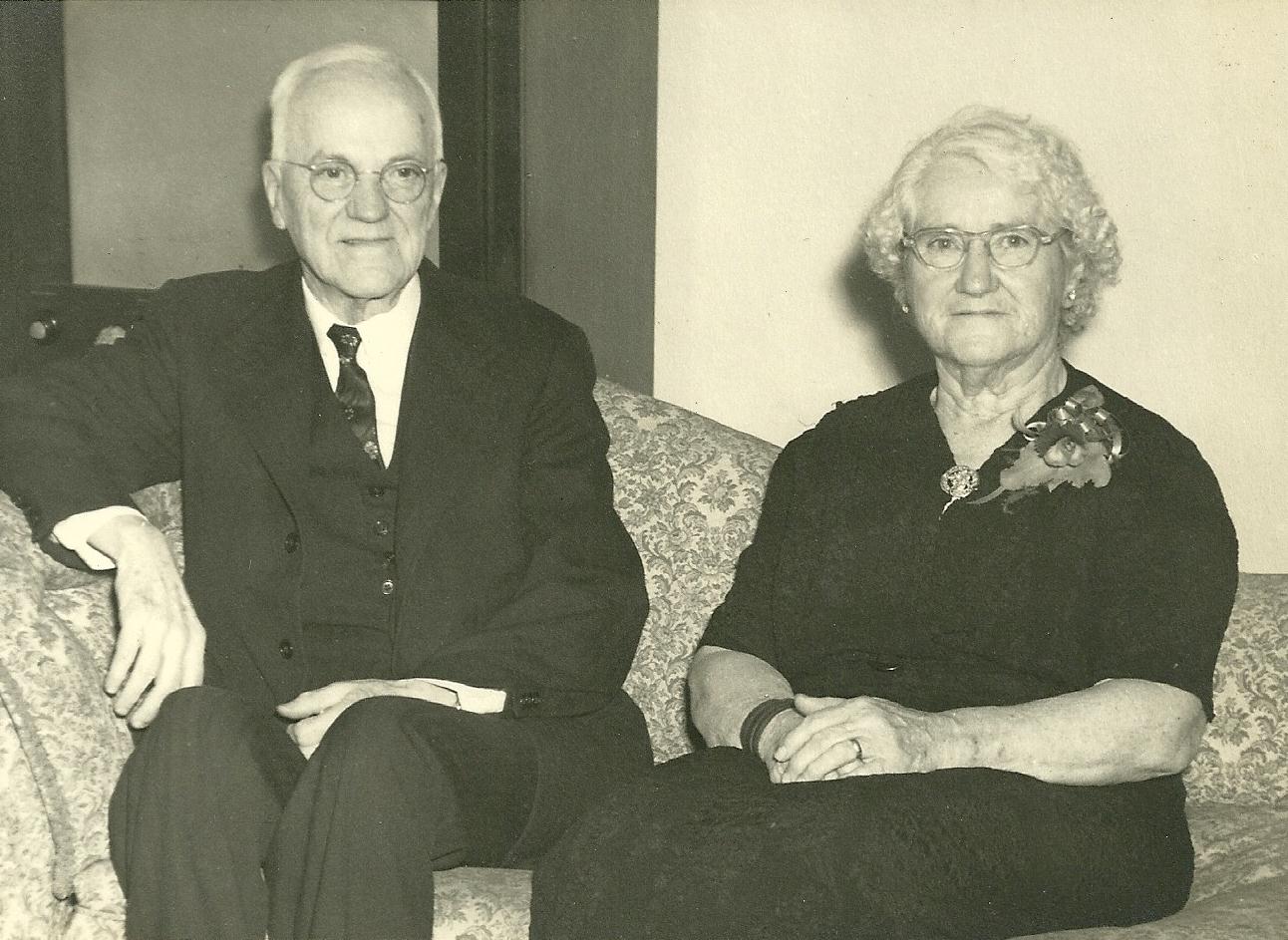
(Continued from Part I of Fooling The Undertaker) The first time that Park returned to Ralph Avenue for his Miss Twaddle, the watchful Twaddle boys were there to meet him. They refused to allow Miss Twaddle to see Park, and so he returned home both frustrated and empty-handed. Park knew he would have to find a way to outsmart the Twaddle boys. None of them was married, and so it was clear to him that they didn’t understand true love. Hardcastle, the undertaker (and Park’s former boss), was another obstacle to overcome – he, too, had never married. And while Park was sure of Hardcastle’s eagle’s eye, he was just as certain that Hardcastle’s hearing had not been cured a few years ago by Dr. Copeland’s quack patent medicine. So, when Park returned the second time in late May of 1900, he had already planned their escape, guiding Miss Twaddle’s actions and informing her where to meet him. Miss Twaddle would tiptoe down the stairwell, being exceedingly quiet. When she reached the door, she would walk in the opposite direction of Hardcastle’s parlor and down Macon Street toward Saratoga Square. On this second visit, Park was successful. Meeting up with Miss Twaddle, he spirited her away with him – and away from her life on Ralph Avenue. The two had “eloped” in grand fashion, making their way to a church far enough away from Ralph Avenue that they could marry without interference – which they did – that day. Afterwards, […]
FOOLING THE UNDERTAKER (1900)
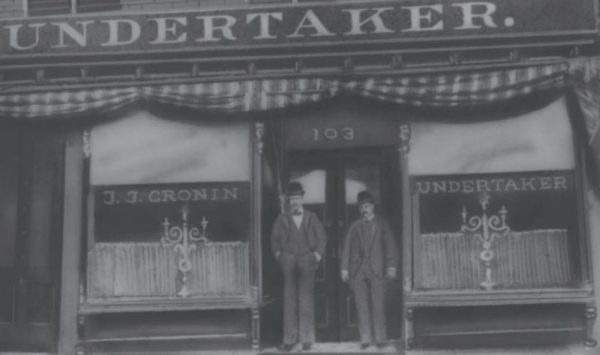
Among the many thriving shops that lined busy Ralph Avenue at the turn of the century was a single story storefront at 159 Ralph Avenue. Just up from Macon Street, it stood amongst the avenue’s tailors, bakers, butchers, paper-hangers, plumbers, and pharmacies, dealing in bereavement and mourning. Hardcastle Brothers Undertakers had been in the neighborhood for almost as long as there had been a neighborhood. When a local resident died, it was usually Robert K. Hardcastle’s business to have them removed to his undertaking salon where he would prepare them for their wake and subsequent burial. Hardcastle was of Scotch-Irish descent – a bit bull-headed, very stubborn, and quite recently deaf. But he was a respected member of the community for the role he played in it, and the work he did for the families here. Hardcastle prepared and buried a good number of the people who died on Macon Street and the surrounding streets at the time. His business was steady, as people were constantly dying, so, other than a bit of advertising he did a few years ago for Dr. Copeland’s patented Hearing Treatment – he had little need to advertise his own undertaking services. It was all word-of-mouth. In 1900, though, a small piece of newspaper fluff about an employee of Hardcastle’s brought some unwanted advertising to Hardcastle and his salon. THE MORTUARIST’S SHOPKEEPER In Hardcastle’s employ was a man by the name of Henry C. Park. Park was Hardcastle’s shopkeeper. In addition to helping Hardcastle with ordering and […]
TINTYPE, OWNER, 738 MACON ST. (1892)
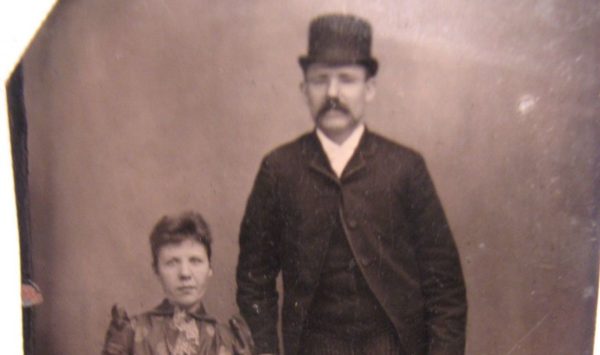
This is the oldest picture we tracked down of a former owner of 738 Macon Street, a house which was the subject of our first House History Book, “No. 738 Macon Street: The Story of a House.” A tintype, it was taken around 1892 at Macy’s in Manhattan, a standard location where people went to have such parlor photographs made. The subjects of the tintype are Martin Loftus and his wife, Rose. (These are the grandparents of the celebrated Aunt Patsy, who we tracked down during the writing of the book. Click the link to enjoy a short interview with her about her time in the 1940s on Macon Street in Bed-Stuy.) Then recently married, Martin and Rose were living at No. 32 Greenwich Avenue in Manhattan where Martin was working as an engineer. Around the turn of the century they would move with three kids (and one on the way) to a wood frame house at 293 Bainbridge Street in the Stuyvesant Heights section of Brooklyn. The house no longer exists, but neither does the wood mill that sat next door to it. Another 20 years later, in 1919, and their 3-generational family of nine would move into 738 Macon Street – where members of the Loftus family would live for 32 years. Follow @BrownstoneDetec ———————————————————————————————————————– The Brownstone Detectives The story you have just read was composed from extensive historical research conducted by The Brownstone Detectives. We perform in-depth investigations on the historic homes of our clients, and produce […]
A COLLAPSE, A DEATH, & AN INQUIRY (1912)
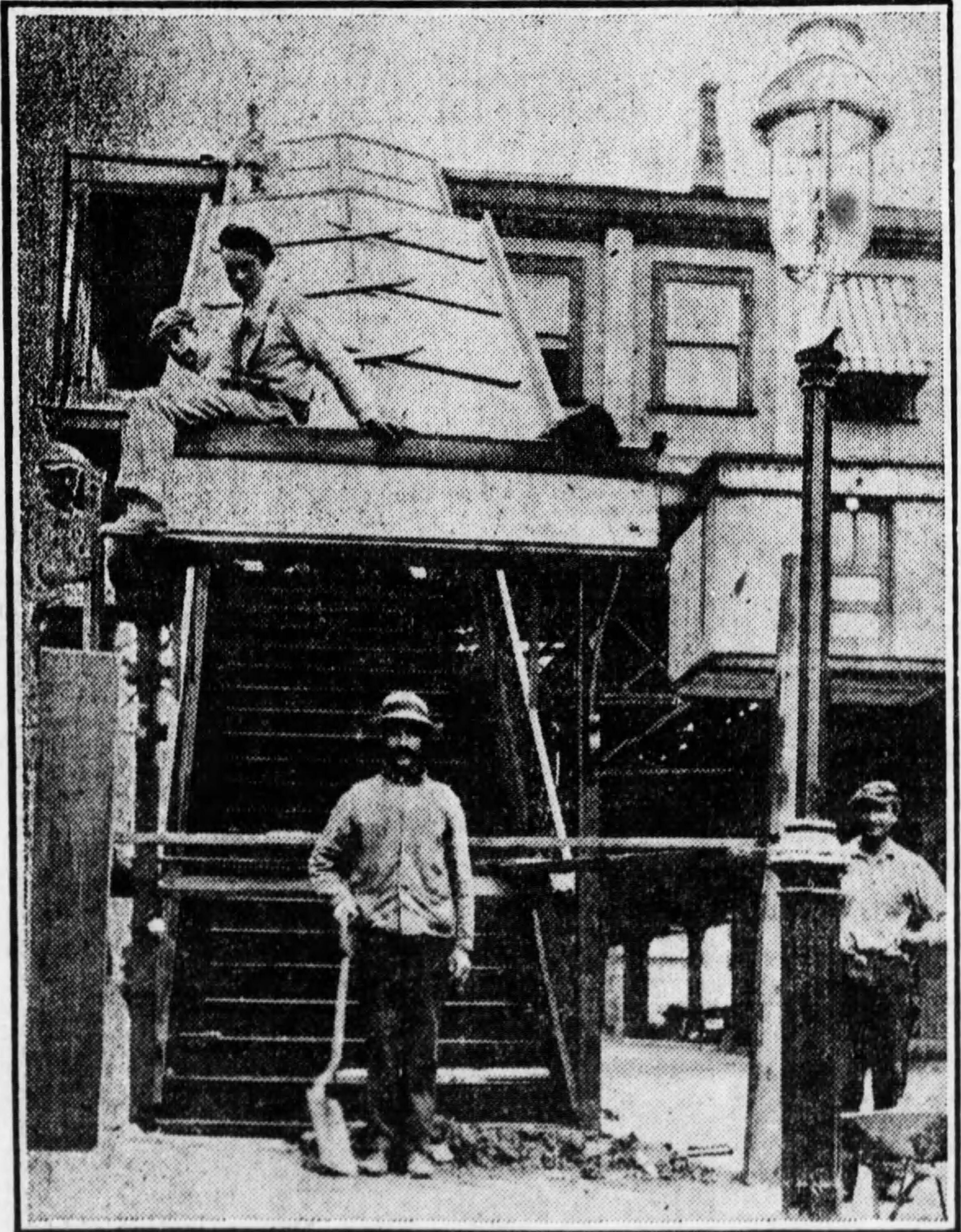
******************************************************************************************************************************** Brownstone Detectives investigates the history of our clients’ homes. The story you are about to read was composed from research conducted in the course of one of those investigations. Do you know the history of YOUR house? ******************************************************************************************************************************** It happened just before Christmas of 1912. A young husband in the prime of his life rushes to buy a last-minute Christmas gift for his beautiful wife. With the pearl necklace safely deposited in his suit-coat pocket, he dashes to catch the train that is approaching. Rushing up the stairwell to the Long Island Rail Road (L.I.R.R.) platform, he quickly reaches the top step. As he turns the corner to run for the platform, he barely senses the very stairwell beneath him shifting almost imperceptibly beneath his feet. Then, as a loud crack reports his entire balance has shifted, and he is suddenly in a terrifying free-fall. Seconds later the young husband’s body is covered with tons of – what had seconds before been – concrete stairs. This fatal collapse of the L.I.R.R. stairwell occurred at Atlantic and New York avenues, and was subsequently blamed on the corrosion of two cast-iron posts which supported the entire concrete structure. The tragedy on the L.I.R.R. stairway at New York and Atlantic avenues ended in the sudden death of a well-known art expert, David H. Cochran of 113 Macon Street. THE BEGINNING OF A “BIG” INQUIRY The very day afterward, as the finger-pointing already began to take place, a “big” inquiry was established which […]
WHERE WAS THIS PICTURE TAKEN? PT. II (1924)
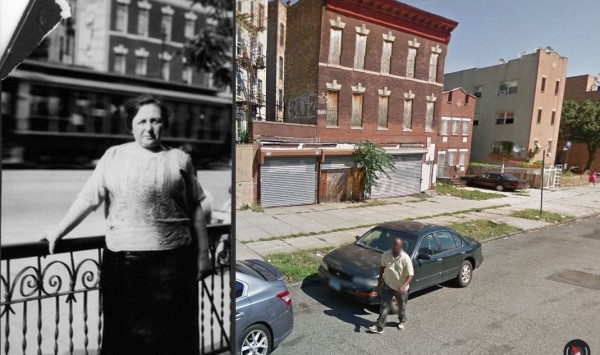
Junior Brownstone Detectives! In last week’s episode, “Where Was This Picture Taken, Pt. I,” we challenged you to a task of monumental proportions: “Study an historic photograph and determine where in Brooklyn it was taken.” As you’ll recall, while the photograph had some distinguishing elements in it, the location of the subject was not immediately discernible. Each of the elements therein could have been found within any of the sections of the borough. We decided, though, that studying the elements of the picture itself, along with just a bit of information about the individual within the picture, we might determine, with great specificity, exactly where the photograph was taken. Today, we are going to review some sources that the Brownstone Detectives use on a daily basis to solve everyday dilemmas such as this one. AN HISTORICAL DETECTIVE’S TOOLKIT Where do we begin when attempting to determine the Brooklyn location of an old photograph? There are a number of resources that can be of use in any mystery such as this. For the particular one we’ve presented you with, though, we will list the resources that we often use and show you how to use them in attempting to find a solution: Ancestry.com – If you have a name connected with the subject in the photo, as we did, this is always a good place to begin your search. At Ancestry.com, using the search function, place any names that you have into the engine, and then see what pops up. With […]
WHERE WAS THIS PICTURE TAKEN? (1924)
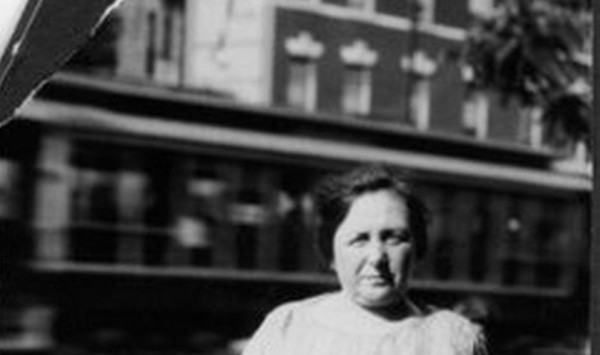
Calling all junior Brownstone Detectives! Today we have a mystery for you to solve! We invite you to come along with us as we grapple with another enigma – discerning the exact source and location of a common celluloid snapshot! EXAMINING THE EVIDENCE Have you ever come across an old family photograph and wondered when and where it was taken? You study the dog-eared snapshot and a few things immediately stand out: • A woman leans against an iron fence. • Behind her is a distinct-looking row of buildings. • A streetcar whizzes by in the background. Not much to go on, you decide, and so you think, “There must be thousands of places where this could have been taken!” And there are. But there are also many ways of whittling that list of places down and possibly even finding the exact spot where your family member (and the photographer) stood when that picture was taken. And all it really takes is a little deductive reasoning, my dear Watson! So, put on your junior Brownstone Detectives caps, set your brains to “quizzical,” and let’s go on an adventure together – through Brooklyn of the “Roaring ’20s”! ANALYZING THE CLUES First of all, we must analyze the clues we’ve listed above. Since this is a family member, we already have some background information about the woman in the picture. The woman is your great-grandmother, Sarah Bilson, and she was married to Harris Bilson. They had two kids, one of which was […]